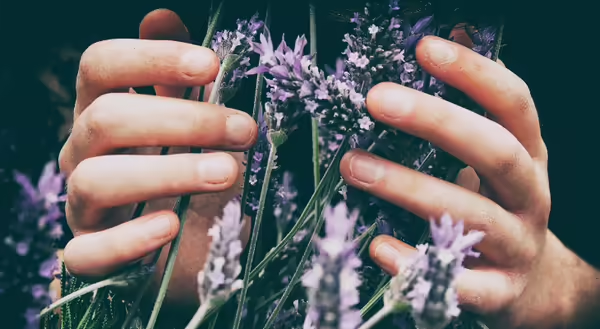
Walking through any garden can be calming, educational, inspiring, energizing, or a combination of all of these. A new trend in gardening is creating intentional gardens; gardens with a specific purpose, like a sensory garden.
Sensory gardens are areas designed to stimulate one or more of the five senses: sight, smell, sound, taste, and touch. While often geared toward young children, sensory gardens are enjoyed by all ages. They can also be therapeutic for individuals with developmental or physical disabilities, sensory processing disorders, or cognitive challenges. Any time you explore a garden, you're already connecting with some of your senses. But a sensory garden has a more intentional approach by including and arranging specific plants to engage the senses.
Sight
Try contrasting color, texture, light, shadow, and form in the garden. Warm colors like red, orange, and yellow, are energizing, while cool colors, like blue, purple and white, are relaxing. Select for both! Bright mixes of garden zinnias (Zinnia elegans) or giant yellow sunflowers (Helianthus annuus) towering above the garden make for an invigorating pop of color, and both will attract beautiful butterflies to the garden.
Smell
The strongest human sense also has the potential to bring back specific memories and experiences to individuals. Some plants release scent naturally without the need for touch (roses), while others do not release a scent until they are rubbed or crushed (geranium). Catmint (Nepeta × faassenii), a hardy perennial that produces pale purple flowers from May to September releases a light lavender-like scent when the leaves are rubbed. Fragrant herbs are also great plants to engage our sense of smell and test our recognition of herbs used in everyday products and recipes. These would include English lavender (Lavandula angustifolia), rosemary (Salvia rosmarinus), and anise hyssop (Agastache foeniculum).
Sound
Some sounds in the garden occur naturally—wind blowing through the plants, or leaves crunching beneath our feet. Wind chimes and water fountains can add a calming sound, as well. Bird feeders, baths, and plants with berries (serviceberry, Amelanchier spp.), or seeds (Echinacea spp.) can attract our feathered friends to visit the garden to play their song. Ornamental grasses, like switchgrass (Panicum virgatum), rustle in the wind. Dried seed pods on false blue indigo (Baptisia autralis) can make natural maracas as the seed rattles against the hard pod.
Taste
A variety of fruits, vegetables, and herbs can be added to a sensory garden to explore tastes in the garden. Edible flowers, including nasturtium and pansy, also make tasty additions. Flavorful herbs to include in the garden are basil (Ocimum basilicum), chives (Allium schoenoprasum), and lemon balm (Melissa officinalis), and the above mentioned serviceberry. Clearly identify which plants are edible in the garden, and don't combine edibles with toxic plants.
Touch
A variety of textures to explore, including rough, smooth, fuzzy, and even sticky should be offered through plant bark, foliage, flowers, seeds, and fruits. Tough plants that can withstand frequent handling should be selected. Lambs ear (Stachys byzantine) is a favorite fuzzy leaf plant to include. In contrast, succulent plants, including hens & chicks (Sempervivum tectorum) or sedums (Sedum spp.) offer a smooth, fleshy leaf.
Just like with any garden, select plants that are hardy to your area, and of various color, height, textures, and bloom times. To ensure safety in the garden, plants should be non-toxic and pesticides should not be applied. A sensory garden can be a calming place while also being a great spot for all to explore their senses and interact with the environment and plants around them.